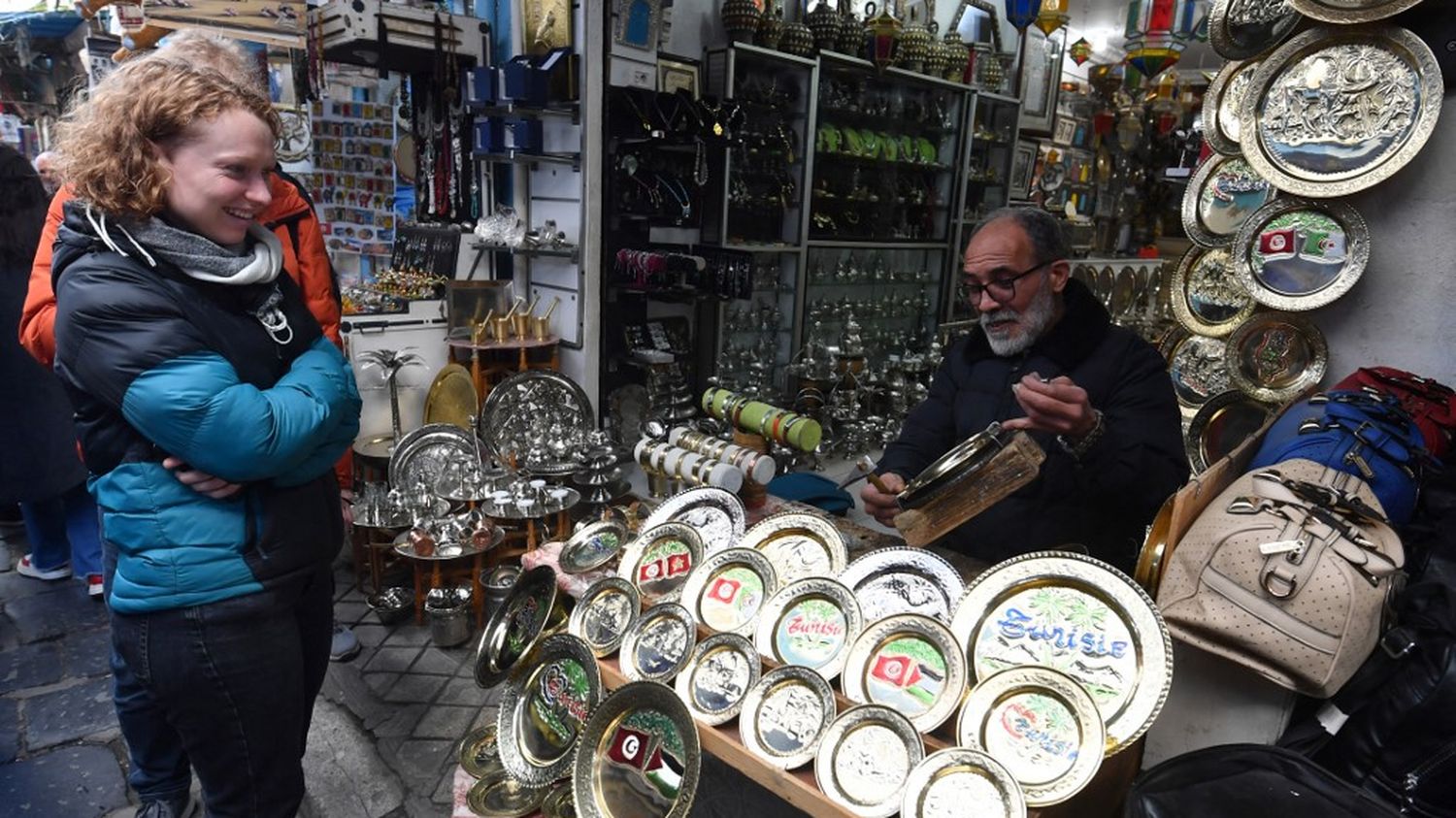When it is not training that is lacking, it is the absence of public initiatives that prevents the development of engraving on copper, silver or gold in the north of the African continent.
Published
Reading time: 3 min

Matis tracing, openwork or setting: these ancestral techniques of engraving on metals, very recently listed as “intangible heritage” by UNESCO, are “little valued” in the Maghreb where artisans struggle to perpetuate their know-how.
Manual engraving – on copper, silver or gold – of geometric, plant or even astrological motifs obtained the prestigious UN label at the beginning of December. The candidacy of this craft adorning jewelry, kitchen utensils or decorative objects, was supported by ten Arab countries including Tunisia, Algeria and Morocco. “This registration commits us to preserving this exceptional know-how”, welcomes Tunisian Imed Soula, one of the three experts who presented the file, to AFP.
Expertise in danger
An expert in engraving, Mohamed Amine Htiouich, 37, learned the ABC of copper engraving at the age of 15 before moving on to silver and then gold, in the family workshop in the medina of Tunis, the capital. Tunisian. Throughout the Maghreb, metal engraving is passed down from father to son, using traditional methods. But to adapt to new demands, the craftsman learned machine engraving. “I don’t want to see this tradition disappear. I’m afraid that one day there will be no more replacements,” worries Amine Htiouich, willing to train young people for free.
In his workshop in the “Crafts Village” in Denden, west of Tunis, Chiheb Eddine Ben Jabballah, 68, often teaches his art to women who want to create jewelry or make bassinets, with chiseled copper ornaments. President of the National Chamber of Artisans, the man who has trained hundreds of engravers over a 50-year career finds that the courses, sometimes reduced to three months, are too short. He “It takes at least two years to learn all the techniques of engraving”he said, regretting that his job “very rich or little valued”.
“Good publicity” internationally
In Tunisia, metal engraving dates back to the Carthaginians. The diversity of current techniques results from crosses between Islamic civilization, Mediterranean traditions, those of Berber heritage and influences from the Orient. The country still has 439 artisans specializing in metal engraving, according to the National Crafts Office.
In Morocco, a very touristy country with renowned craftsmanship, the majority of carvers now operate in modern workshops. Abdelilah Mounir, a seller of copper objects in Fez, the ancient imperial city, is convinced that “the recognition granted by UNESCO will help on the tourist and commercial level. At the international level, it is good publicity”.
According to Mohamed Moumni, a jeweler based in Salé, near Rabat, “there is a strong demand (for copper crafts) but the problem is the scarcity of people who know how to work. We can no longer find craftsmen”. Young people can, however, learn the techniques in training centers from former professionals.
In Algeria, despite a lack of public initiatives, engraved metal objects remain in high demand. Jewelry in chiseled gold or silver systematically enters the trousseau of young brides and each region has its specialty: Tlemcen gold jewelry, Kabylia and Aurès silver rings, necklaces and bracelets sometimes enhanced with coral.
More local recognition
After falling in love with engraving in a tiny jewelry store, Walid Sellami, a 37-year-old modern jewelry designer, couldn’t find training and learned “all alone for two years on the internet”. “It’s a wonderful job. You don’t need to talk to people to sell. They can see the jewelry for themselves”, said the young Algerian. The latter believes that in his daily life the Unesco label “don’t change much”. On the other hand, it would be “proud” than engraving, which encompasses “lots of other jobs”either “more recognized” within the region.
In Libya, a country plunged into chaos since the fall and death of dictator Gaddafi in 2011, artisans also complain of a lack of encouragement. “The development of this craft is very limited, it is only demand that encourages artisans”not the authorities, confides Youssef Chouchine to AFP, stressing that “the majority of former craftsmen have left this profession” not very lucrative. “Why teach my children this craft? So that they stay at home and do nothing? The situation is not good”adds this sixty-year-old craftsman, who nevertheless tried to pass on his art to two or three apprentices.
